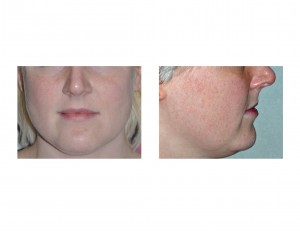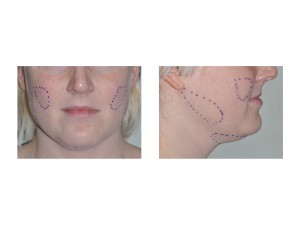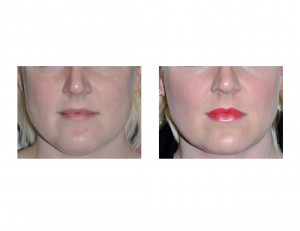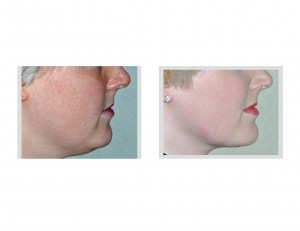Background: The shape of one’s face is influenced by many bony and soft tissue elements. The size of the facial bones and the prominence or deficiency of the lower jaw provides a support framework that serves as a foundation. The soft tissue that drapes over the bones also plays a major role in its shape with much coming from the thickness of the facial muscles and how much fat lies under the facial skin.
There are numerous facial shapes, some of which are flattering and others which are not. The one facial shape that is disliked by many people is a round face and, if big enough, may be called fat. Not only is the shape round but it usually lacks distinct facial highlights. Most round faces include fullness in the neck tissues as well. One of the anatomic features of the round face is that it has more fat beneath the skin creating a thicker subcutaneous layer that masks the prominence of the underlying facial bones.
Facial and neck fat is not just one uniform layer underneath the skin. There are numerous fat compartments that make up certain prominences or collections that are accessible to surgical removal. While fat exists underneath all areas of the facial skin, much of it is thinner and not easily removed. Unlike the abdomen or the thighs where broad areas can be treated by liposuction, facial fat can not be treated the same way or so effectively.



Case Highlights:
1) The round face has greater amounts of compartmentalized fat in the cheeks, neck and side of the face which may be surgically treated. Much of the round facial fat has extensive subcutaneous fat which can not removed.
2) The round face can be improved by cheek, neck and lateral facial fat removal using a combination of liposuction and direct lipectomy.
3) The amount of ‘derounding’ that a face can achieve by fat removal alone can be minimal to moderate improvement. If combined with facial bone augmentation , if needed, the results can be more significant.
Dr. Barry Eppley
Indianapolis, Indiana



